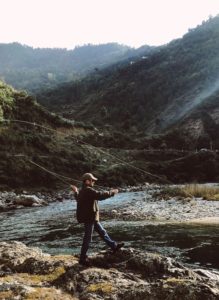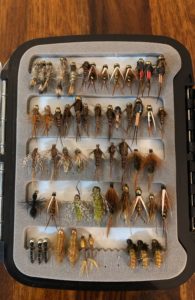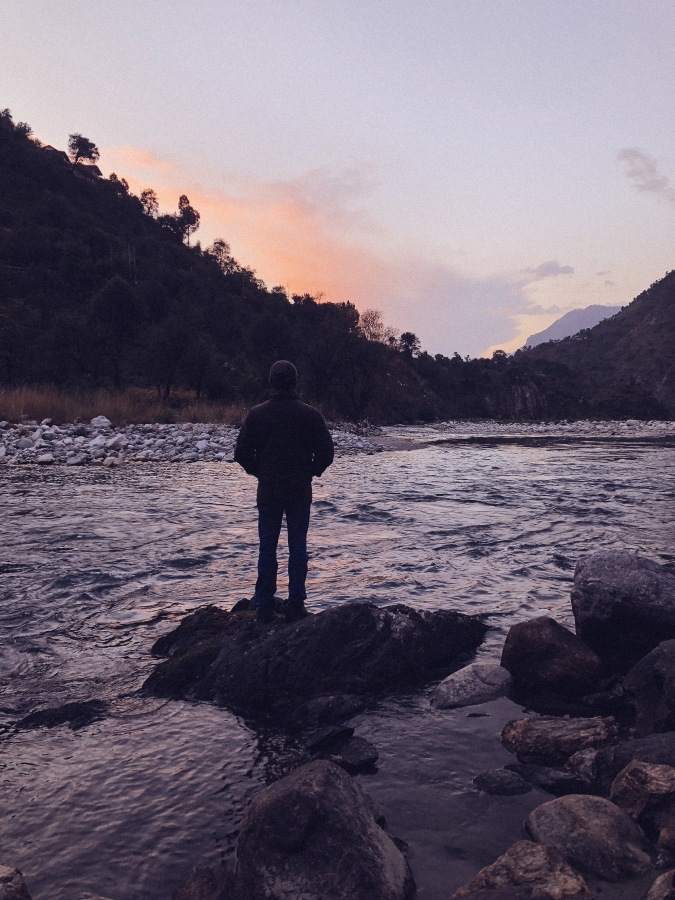Salman Usmani is one of the select few Delhiites who practice the art of fly-fishing diligently. It has a profound impact on his persona
Stillness is at the core of all activities, and if one is oblivious of this it can be destabilising. Many Delhites, to escape the hustle-bustle of a busy metropolis, get out of the city, and more often than not, do what they would do had they been in Delhi—party.
Some like the writer and photographer Salman Usmani, go to the wilderness, find a clear stream of gushing water down a green valley lit by the golden hue of sunlight filtering through the vegetation and fish trout. To be more specific, he goes to the Tirthan Valley outside the Great Himalayan National Park in Himachal Pradesh, finds stillness while indulging in active liaison with a very intelligent fish—trout.
Or simply, he’s ‘fly fishing.’ A solitary activity, a date with self while engaging with trout. It’s also a work of art. And a subtle communication with nature. Almost spiritual. So the idea is to fool trout by a factitious bait—that’s a near-exact replica of an insect (again a work of art) they like to feed on at a given time of the year, day, season—and sometimes, rarely, they fall for it. And that’s very rewarding and joyful, but the process itself is very satisfying, for in your mind, you’re trying to read the mind of trout, and they more often than not outsmart you.
Even to describe the experience is joyful, as is obvious talking to Salman about fly fishing. He had an early association with fishing, though not a very lucrative one in terms of the catch. He spent a sizeable part of his growing up years in Saudi Arabia, and would often go fishing with his father. Ten years ago, as luck would have it, he was at Himalayan Trout House run by Christopher—he introduced fly fishing to the valley.

For the sake of information, there are three types of trout found in India distinguished by their colour—namely brown, rainbow and silver. In this part of Himalayas, there’s brown and rainbow trout to be found, informs Salman.
The best times of the year to have a date with trout extends from spring to fall or April to October. You can buy fly-bait online—Amazon has a wide range of fishing lures, bait, hook, and flies to offer. They are very detailed and precise—colours, feathers, legs, eyes. Some people like to spend hours together making their own fly-bait using bird feathers, thread and what not!
A fairly intuitive activity, fly fishing also requires skill that comes with practice. Inspired by Japanese traditional fishing technique called ‘Tenkara’ which means “from heaven,” that uses a long bamboo rod, horsehair line and wet fly as bait. Someone has rightly described it as the simplest, purest, and yet most skilful and pleasurable way to catch a fish. For the simple reason, as Salman puts it, “It’s not easy to fool trout.”
The fly used as bait has to look like the real one. There are multiple such bait replicas of various insects—an adult or a larva—that trout prefer to eat depending on the season, time of the day. The trickier part of catching the fish is casting the fly-line—thin, supple, could be a floating or sinking variety but usually lightweight—in the water towards the target. That’s also a work of art. “One has to cast the fly-line in the air attached to a loop like a whip, pull it in a way to imitate the movement of the insect (in water),” elaborates Salman.
You stand doing this, in the stream, or by the steam, more often you won’t succeed, but luring trout is very satisfying in itself. “It’s best experienced when you’re alone,” says Salman and adds, “A day well spent is when you don’t catch. Failure in solitude is rewarding,” he adds.
But a catch is always thrilling, even a slight jerk on the far end of the fly-line. Salman tries to recreate the moment. And it’s true, golden moments are best experienced, and sometimes a good description is actually no description.
He likes to hold his catch in hand, and then release it. As if saying it was fun playing with you—hopefully we’ll meet again. “Catching is a by-product, a sort of validation that the job is well done. The real experience is to be alone at the river—(one feels) powerless, irrelevant, meaningless. The solitude and the resulting meaninglessness. And in a flash, you start to feel the exact opposite of all this—acceptance, approval of your skill, craft (when a trout bites the fly).”

Usually, a session lasts for a couple of hours followed by a coffee and snacks break, before another tryst with trout. Walking by the river, it’s the mind that wanders, one is lost in thoughts or thoughtlessness, in sync with the surroundings, ambience, all of it is part of the experience. “A deep calm fills you, and you deal with barest possible self, grappling mostly with failure (in terms of catching a trout) as trout constantly outsmarts you. It’s soothing, there’s unity, while fishing I get better ideas—about things, life, other experiences,” as Salman puts it. It’s like being witness to your own life.
“People fish because they are searching for something. Often it is not for a fish,” writes Fennel Hudson, famous angling author, “With a fly rod, anglers are not casting to a fish; rather to a circle of dreams: ripples that spread into every aspect of their lives.”





